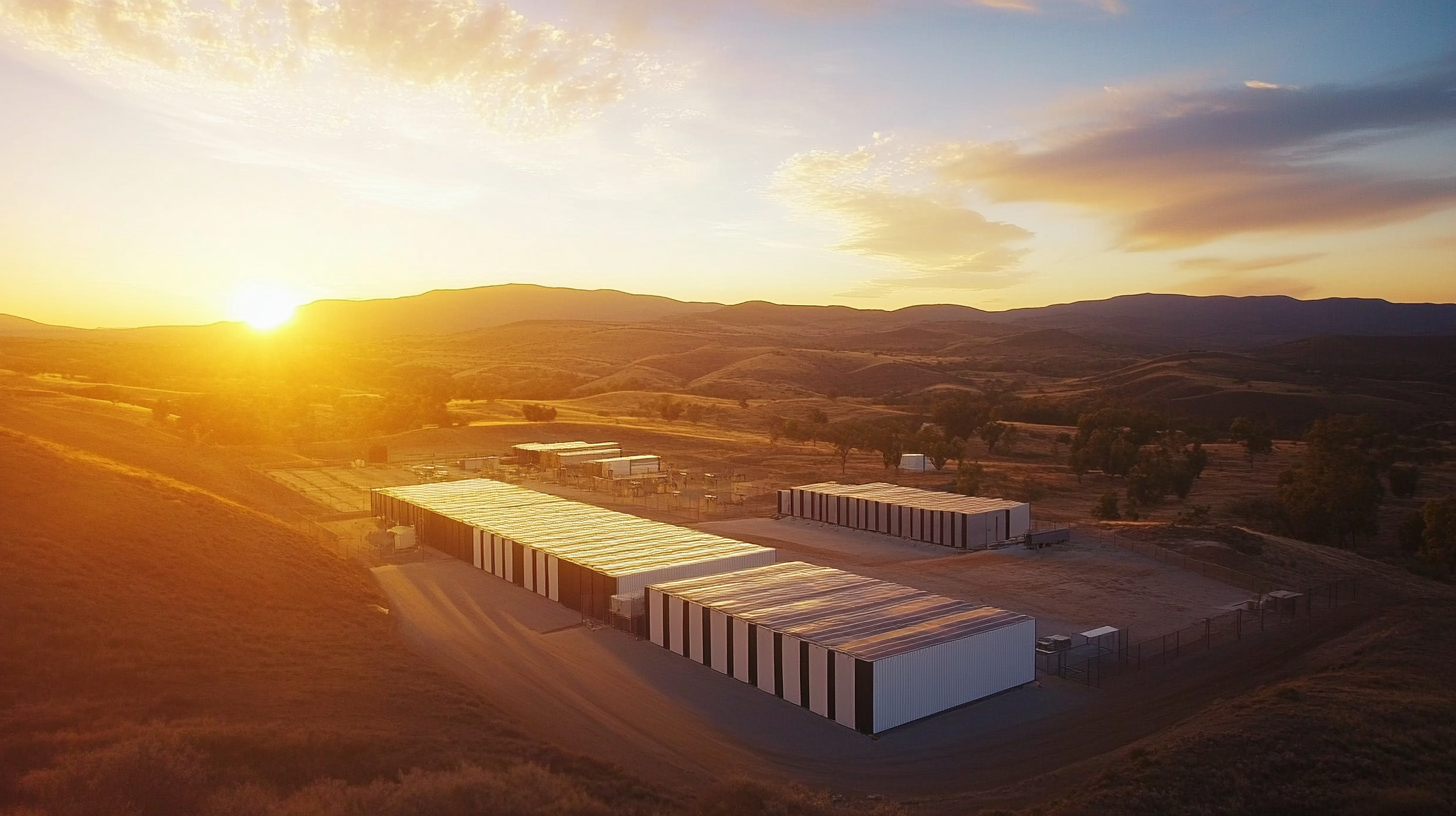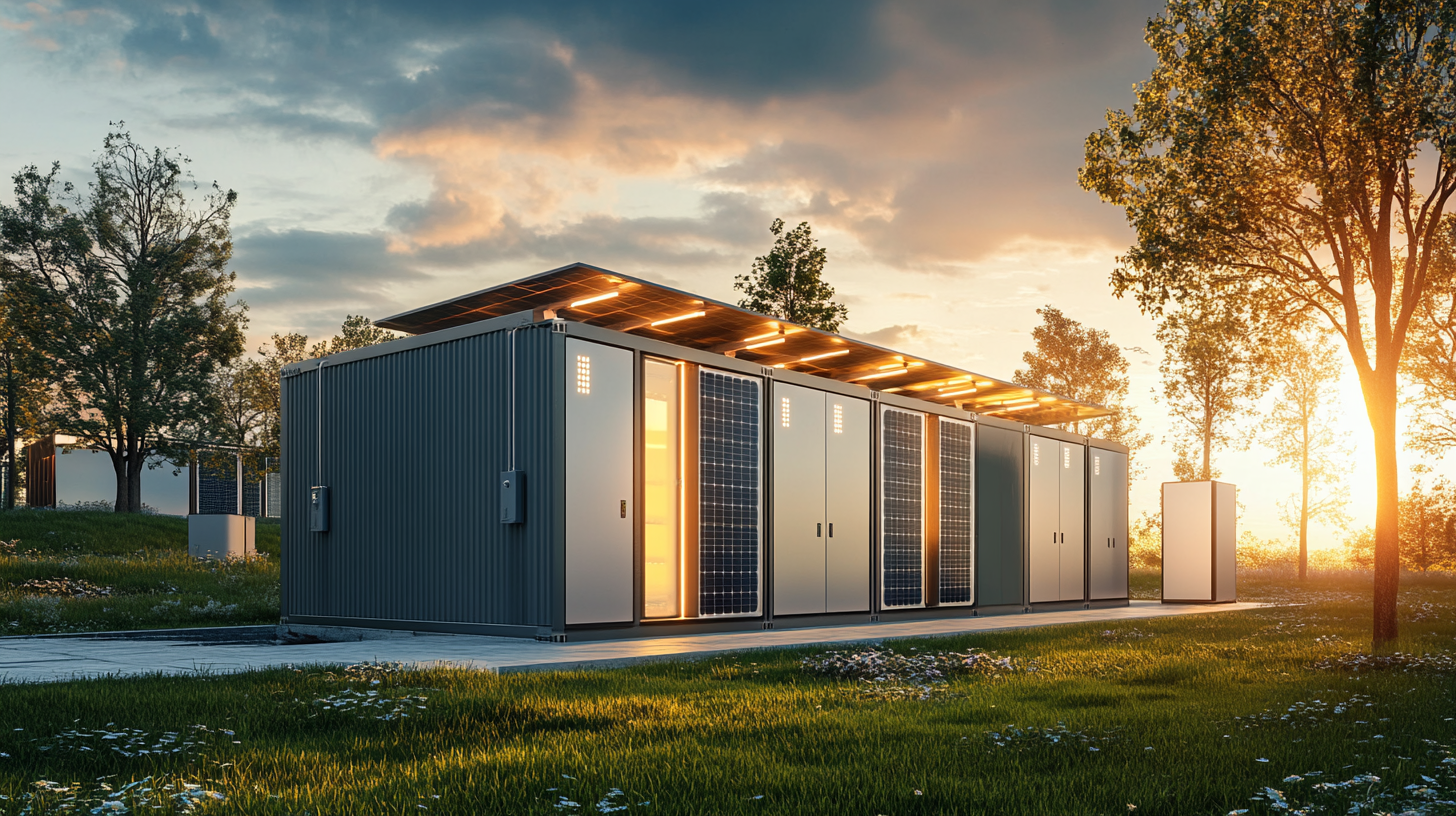Blog
- Home
- Blog
The Comprehensive Handbook to Harnessing Solar Energy Storage Solutions for Global Procurement
As the world increasingly turns its focus toward sustainable energy solutions, the integration of Solar Energy Storage systems has emerged as a pivotal element in the quest for efficient and reliable power supply. These innovative technologies not only enhance the viability of solar energy but also play a vital role in addressing the intermittent nature of solar power generation. With the ongoing advancements in energy storage technologies, stakeholders in global procurement are presented with an array of strategies and solutions that can optimize energy management and reduce reliance on fossil fuels.
This comprehensive handbook aims to guide procurement professionals through the complexities of harnessing Solar Energy Storage solutions. By understanding the nuances of various storage options available today, organizations can make informed decisions that align with their sustainability goals. Exploring case studies, market trends, and critical considerations, this resource aspires to empower stakeholders with the necessary knowledge to incorporate solar energy in their procurement strategies effectively, leading to a greener and more sustainable future.

Understanding Solar Energy Storage Technologies and Their Importance
As renewable energy sources like solar and wind continue to gain traction globally, the significance of advanced energy storage technologies has never been more crucial. With the pressing call from COP28 to triple the capacity for renewable energy generation, the focus is shifting beyond traditional lithium-ion batteries to explore a broader spectrum of energy storage solutions. From giant batteries capable of storing vast amounts of energy to innovative concentrated solar power systems, these technologies hold the key to overcoming storage challenges and facilitating a smoother energy transition. Concentrated solar power (CSP), in particular, presents a viable and cost-effective alternative to conventional batteries. By utilizing mirrors or lenses to concentrate sunlight, CSP systems can store energy in thermal form, delivering it even during non-sunny hours. This ability to provide affordable and scalable energy storage could significantly bolster global efforts to decarbonize energy grids, especially in regions like South Africa, where abundant sunlight and wind resources promise a robust transition to renewable energy. However, the successful implementation of CSP and other emerging storage technologies necessitates the establishment of international standards for efficiency and reliability, ensuring they can be widely adopted. The intersection of technological innovation and renewable energy storage solutions is pivotal in meeting the increasing demand for clean power. As energy storage systems evolve, integrating hybrid models can enhance grid stability and make the most of intermittent renewable resources. Advancements in this field, therefore, are not just about supporting a cleaner energy future; they are about fundamentally reshaping how we generate, store, and utilize energy on a global scale. The time is ripe for a paradigm shift toward more efficient, flexible, and sustainable energy storage technologies that will propel the world into a more resilient energy landscape.

Evaluating Different Solar Energy Storage Solutions for Global Markets
As the world shifts towards renewable energy, solar energy storage solutions have become imperative for balancing supply and demand. Evaluating different solar energy storage technologies is crucial for stakeholders in global markets. The key options include lithium-ion batteries, flow batteries, and emerging technologies like solid-state batteries, each with its own benefits and challenges. Lithium-ion batteries, for instance, are widely favored for their high energy density and efficiency, making them suitable for both residential and commercial applications. However, concerns about resource scarcity and recycling practices pose a challenge to their long-term sustainability.
Flow batteries, on the other hand, present a unique advantage in scalability and longevity. Their ability to decouple energy and power capacity allows for flexible design tailored to specific applications, making them an attractive choice for grid-scale energy storage. Additionally, with advancements in flow battery technology, costs are decreasing, thus broadening their appeal in the global market. Emerging technologies like solid-state batteries also merit attention for their potential to improve energy density and safety, though they are still in the experimental phase.
When evaluating solar energy storage solutions, market participants must consider factors such as cost, efficiency, lifecycle, and environmental impact. By weighing these aspects against regional energy needs and regulations, stakeholders can better position themselves in the evolving landscape of solar energy storage, ultimately driving greater adoption and innovation in the sector.

Strategies for Implementing Solar Storage in Supply Chain Management
In the evolving landscape of supply chain management, the integration of solar energy storage solutions presents a game-changing opportunity for businesses striving for sustainability. By implementing solar storage systems, organizations can effectively harness renewable energy, thereby reducing their reliance on conventional power sources. This strategy not only lowers operational costs in the long run but also enhances the resilience of supply chains against fluctuations in energy prices and availability.
To successfully integrate solar storage into supply chain management, businesses must first assess their energy consumption patterns and storage needs. This involves conducting a thorough analysis of current energy usage and identifying peak demand periods. With this understanding, companies can strategically size their solar storage solutions to ensure they have sufficient backup during crucial times. Furthermore, leveraging smart technology can optimize energy management, enabling businesses to strategically draw power from their solar storage when energy costs are high, thus maximizing savings.
Collaboration with energy storage providers is another essential strategy. Partnerships with experts in solar technology can facilitate the installation of efficient solar panels and storage systems, tailored to specific business requirements. Companies should also consider engaging in collective procurement initiatives, allowing multiple businesses within a sector to jointly invest in solar storage solutions. This approach not only spreads financial risk but also enhances collective bargaining power, ensuring access to the best technologies at competitive prices. As the transition to sustainable energy continues to gain momentum, those who embrace solar energy storage will be well-positioned to thrive in a more environmentally conscious marketplace.

Key Challenges in Solar Energy Storage Adoption and How to Overcome Them
The adoption of solar energy storage solutions carries significant promise, yet several challenges hinder its widespread implementation. One primary obstacle is the high initial cost of solar storage systems. Many businesses and homeowners are reluctant to invest due to the perceived financial burden, even though long-term savings can be substantial. Innovative financing models, such as power purchase agreements (PPAs) and energy-as-a-service solutions, can alleviate these costs, making solar storage more attainable.
Another critical challenge revolves around the technology itself. The efficiency and lifespan of batteries can vary significantly, impacting overall performance. As technology evolves, advancements in battery storage solutions like lithium-ion and flow batteries are beginning to address these concerns. Continuous investment in research and development, alongside consumer education about these technologies, will play a vital role in encouraging broader adoption.
Furthermore, regulatory frameworks often lag behind technological advancements. Navigating complex regulations and permitting processes can be daunting for organizations looking to implement solar storage systems. Collaborative efforts between industry stakeholders and government bodies are essential to streamline these processes. By creating clearer guidelines and incentive programs, the path to adoption can be significantly eased, paving the way for a more sustainable energy future.
Future Trends in Solar Energy Storage for Sustainable Procurement Practices
As the world increasingly shifts towards renewable energy, solar energy storage solutions are becoming integral to sustainable procurement practices. This transition is informed not only by technological advancements but also by a growing awareness of the environmental impact of conventional sourcing methods. Future trends indicate that enhanced battery technologies and innovative storage systems will play a pivotal role in transforming how businesses approach energy management.
One of the most promising developments in solar energy storage is the evolution of lithium-ion batteries, which are becoming more efficient and cost-effective. These advancements allow companies to store excess solar energy generated during peak sunlight hours and utilize it during non-productive times, significantly reducing reliance on fossil fuels. As organizations adopt these solutions, they not only improve their energy resilience but also cut operational costs, aligning with sustainable procurement goals.
In addition to battery technology, the integration of smart grids with solar energy storage systems is emerging as a vital trend. Smart grids facilitate real-time monitoring and management of energy flow, enabling businesses to optimize their energy consumption and production. This capability promotes a circular economy approach, where surplus energy can be redirected to other users or stored for future use. This interconnectedness not only supports sustainable procurement but also fosters a community-based energy model, driving broader engagement with renewable resources.
